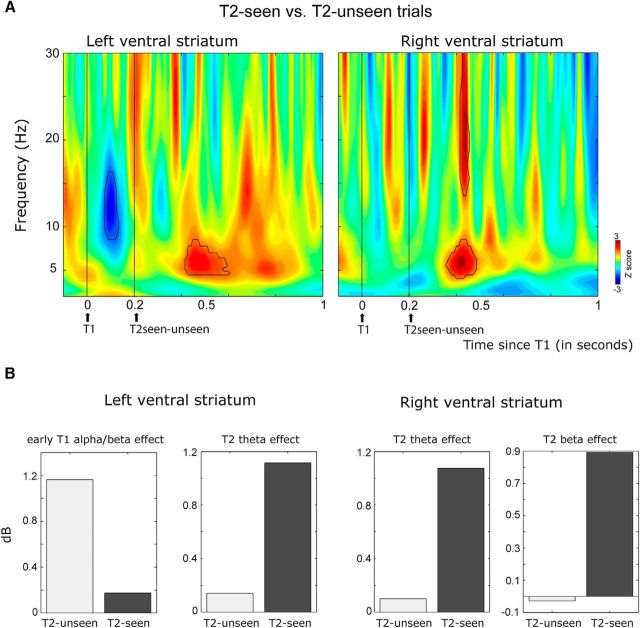Figure 3.
The AB is predicted by, and reflected in, ventral striatal activity. Shown are intracranial EEG data from the left and right ventral striatum. A, Time-frequency representations show z values reflecting the strength of differences in striatal activity between T2-seen and T2-unseen short-interval trials. Time-frequency windows where the difference reached significance are highlighted in black. Average power (in dB) within these significant windows is shown in B separately for T2-unseen and T2-seen trials. The AB was associated with an early difference in T1-induced α and low β activity (8–16) between 80 and 140 ms after T1 in the left ventral striatum. Moreover, conscious T2 perception was associated with an increase in θ activity (4–8 Hz) between 215 and 400 ms after T2 in the left ventral striatum and between 150 and 280 ms after T2 in the right ventral striatum. Finally, in the right ventral striatum, perceived T2s elicited greater activity in the β-band (15–30 Hz) activity between 210 and 260 ms after T2 than T2s that went undetected. Thus, the AB to T2 was foreshadowed by a short-latency response to T1 in the left ventral striatum, and conscious T2 perception was signaled by longer-latency ventral striatal activity in the θ and β bands.

